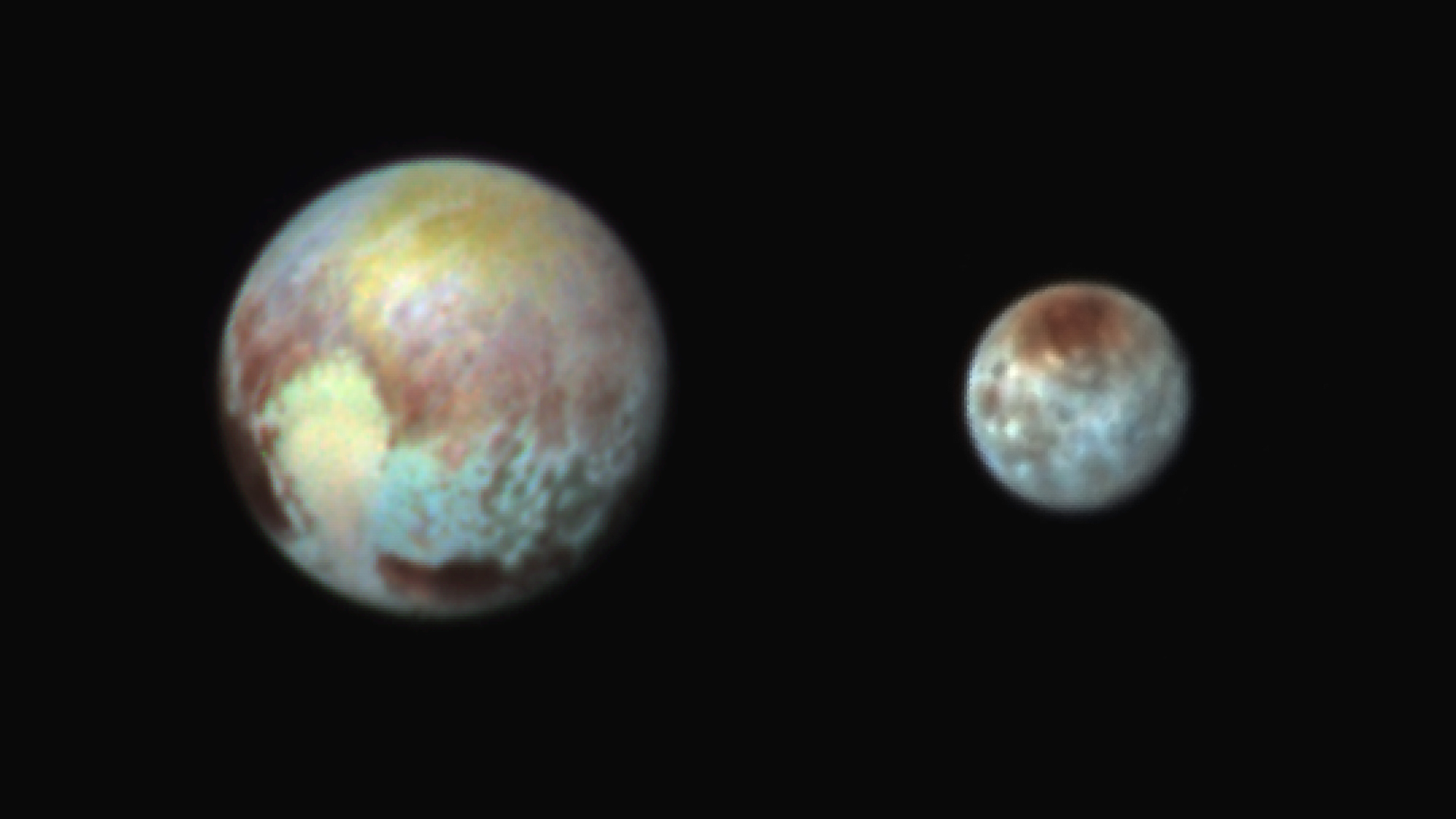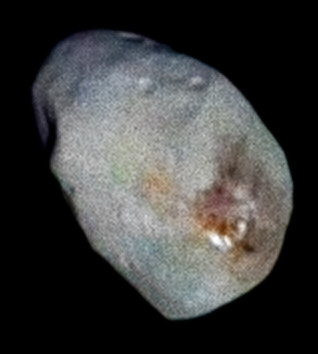Calculations are published for the theory of the origin of the Mordor spot at the north pole of Charon

Charon. Photo: NASA
During the historic flight past Pluto on July 14, 2015, the New Horizons spacecraft made amazingly beautiful photos of Pluto and its five satellites, including the largest one, Charon. Scientists have never hoped to get such detailed photographs of a satellite of a dwarf planet, which is located on the edge of the solar system, at a distance of more than 4 billion km from us (approximately 4.3-7.5 billion km, depending on the orbital points).
In the photographs, astronomers saw a bizarre landscape of water ice, dotted with mountains and canyons. And, of course, a huge mysterious spot of a dirty red color that covers the north pole.
This spot with a diameter of approximately 475 km was named Mordor . The appearance of the spot with the surrounding mountain ranges reminded the scientist of the well-known region of Middle-earth, the possession of Sauron, where Frodo and his friend went to destroy the All-Power Ring.
')
At first, scientists believed that the stain was formed from residues of solid organic compounds that were formed from gases under the influence of ultraviolet radiation, a stream of charged particles from the sun or cosmic radiation.
True, this theory had two small flaws. Firstly on Charon there are no gases. Secondly, there is almost no cosmic radiation, and the north pole is almost always in the shadow of the sun.

The diameter of Charon is about half the diameter of Pluto (photos in pseudocolours). Photo: NASA
Volcanic activity is observed only on Pluto, but not on Charon. That is, to confirm the theory of the formation of Mordor, it was necessary to put forward another theory about the transfer of gas from Pluto to Charon and find the source of radiation for a chemical reaction.
After 12 months of hard work, a group of 127 scientists still managed to bring a theoretical basis for this version. In a scientific paper published yesterday, a group of researchers from NASA, the SETI Institute and other scientific organizations have built a clear chain of events, how Pluto's methane gets on Charon and what happens to it.
So, that's what happens. Being a dwarf planet, Pluto cannot hold all methane on its surface after volcanic eruptions. Part of the methane is regularly blown away by the solar wind towards Charon. In turn, Charon's gravity is also not enough to hold the gas. But scientists have calculated that 2.5% of methane from Pluto remains at the surface of Charon. If you count , during these events about 270 billion methane molecules fall on every square meter of Charon every second.
Charon's methane particles behave approximately like gas particles in the exosphere, that is, they jump along ballistic trajectories. Such a life of molecules continues until they fall into the trap of the north pole. “The temperature at the north pole is incredibly low,” says astronomer Will Grundy of the Lowell Observatory, one of 127 authors of the scientific work, “so that any CH 4 molecule, faced with the north pole, is no longer able to bounce off the surface, as if from any other place on Charon. In the end, some methane accumulates there. ”

Simulation of temperature at different latitudes of Charon in the years 1750-2050 (in ° K)
But that is not all. After all, methane is a colorless gas. To form a red spot of Mordor, it is necessary to conduct a chemical reaction with the participation of ultraviolet radiation. Where to get it?

Spot Mordor. Photo: NASA / Johns Hopkins University Applied Physics Laboratory / Southwest Research Institute
Will Grandi and his colleagues made a model that does not contradict the laws of physics, as ultraviolet rays bounce off hydrogen gas molecules in the interplanetary medium — and fall on Charon’s north pole, which is in the shadow. The ultra-violet knocks the hydrogen atoms out of CH 4 , forming methyl CH 3 . These methane radicals are very active and easily react with each other.
“If all this happens long enough, the fragments continue to recombine, and these large macromolecules begin to form in you, where everything connects with each other in a completely messy mess,” explained Will Grandi. According to calculations, a layer of macromolecules about 0.16 mm thick is formed over a million years.
This medley of macromolecules in scientific terminology is called tolin , organic matter, the absorption lines of which are found in the spectra of many ice bodies of the outer solar system. It is believed that they are a mixture of various organic copolymers formed in the atmosphere from simple organic compounds, such as methane and ethane, under the action of ultraviolet radiation from the sun. It is believed that tolines are chemical precursors of life (under the influence of hydrolysis, tolines can recombine into amino acids).
At the end of the 20th century, scientists managed to obtain Tolins under laboratory conditions on Earth, although here they are no longer formed naturally. However, this proto-new life in reality is even edible - some bacteria can feed on it.
And tolina really dirty red.
CTD
True, there is one small problem. On another satellite of Pluto called Nyxa, a red spot was also detected. But due to its smaller mass (stone size 54 × 41 × 36 km), according to this theory, similar processes should go there about 20,000 times slower. The stain seems too big for such a process. So the riddle of Mordor is still too early to be considered completely unraveled.

Sputnik Nikta. Photo from the spacecraft "New Horizons"
The scientific work was published on September 14, 2016 in the journal Nature (doi: 10.1038 / nature19340).
Source: https://habr.com/ru/post/397653/
All Articles